3sp 5sp Q195 Low Carbon Steel Billets Q235 Q275 Q345 Using Good Quailty Ceramic Fiber Bulk
- Loading Port:
- Dalian
- Payment Terms:
- TT OR LC
- Min Order Qty:
- 100 m.t.
- Supply Capability:
- 50000 m.t./month
OKorder Service Pledge
OKorder Financial Service
You Might Also Like
3sp 5sp Q195 Low Carbon Steel Billets Q235 Q275 Q345 Using Good Quailty Ceramic Fiber Bulk
Description
Reference Price:$260/ton Mn 0.3%-0.6%
Rectangular billet continuous casting billet and mainly general carbon steel, low carbon low silicon cold-rolled material, high quality carbon structural steel, high strength low alloy steel, special steel, etc.
The billet is mainly divided into two kinds from the shape:
Slab: cross section width and height of the ratio of the larger, mainly used for rolling plate.
Billet: equal cross section width and height, or a huge difference, mainly used for rolling steel, wire rod. ,
Steel billets have distinct characteristics as compared with already furnished steel bars and products. Billets have a specific grain structure, which enables the metal to be processed more intricately. Steel billets are also known for their malleability and ductility, especially when exposed to varying temperatures during shaping and molding.
Processing of Steel Billet
Steel billets are considered fresh and raw, and they must undergo a series of manufacturing processes before they can be used for various purposes. Billets are made by means of freezing molten liquid, and are later exposed to extremely low temperatures in order to allow the metal to take shape and solidify in chemical structure. The temperature manipulates the metal's physical properties, and tones its strength and durability. The subsequent processes provide the metal's curved mold design so that it can fit the allotted space provided by other machines, which complete the finishing procedures.
Images
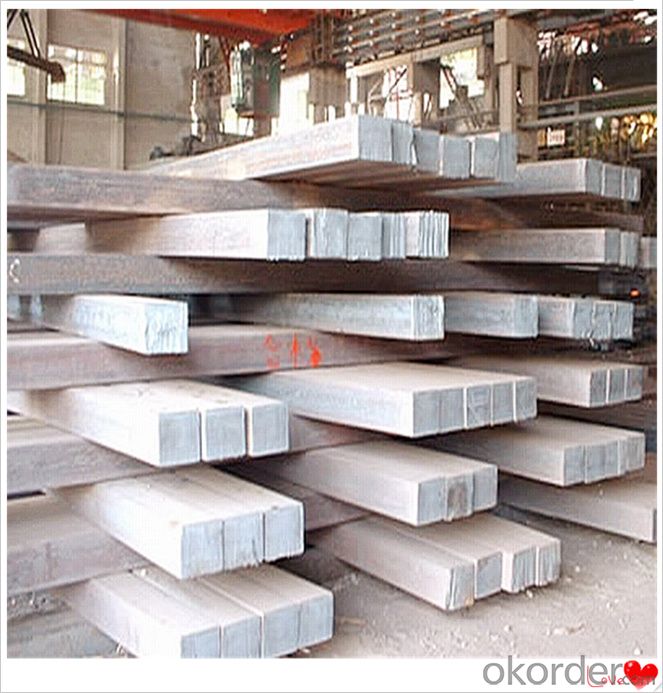
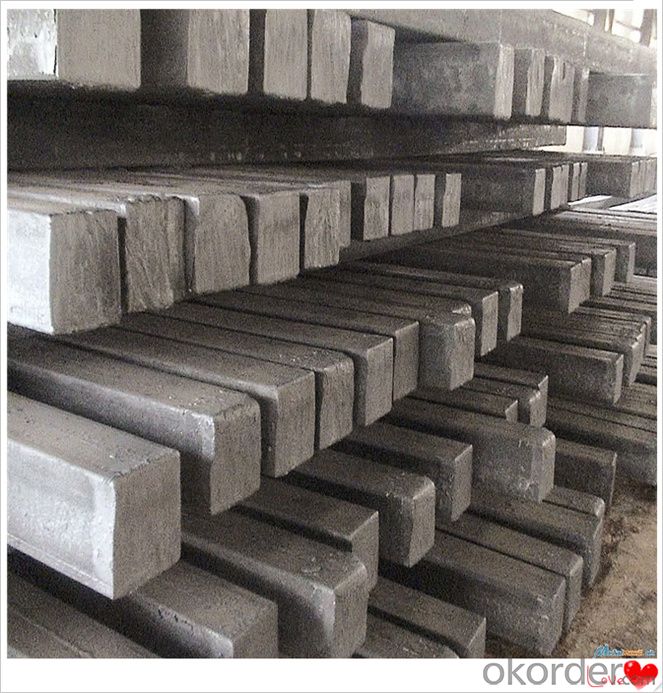
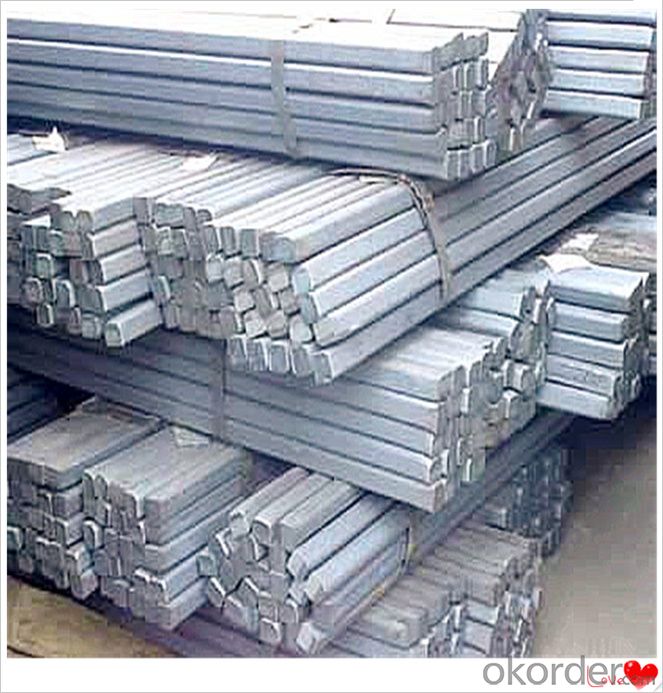
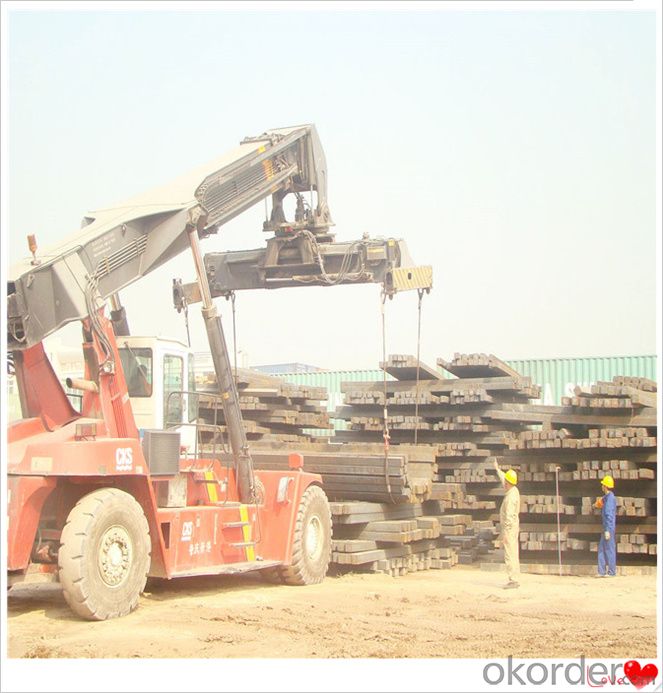
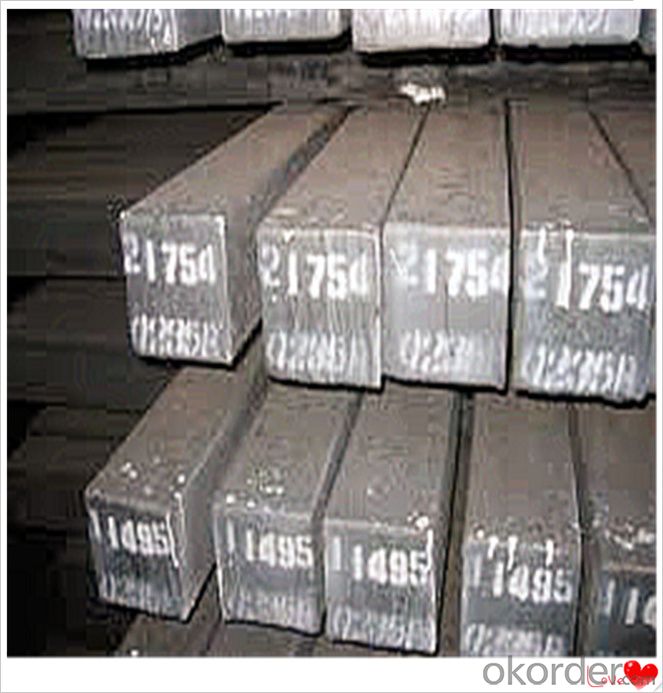
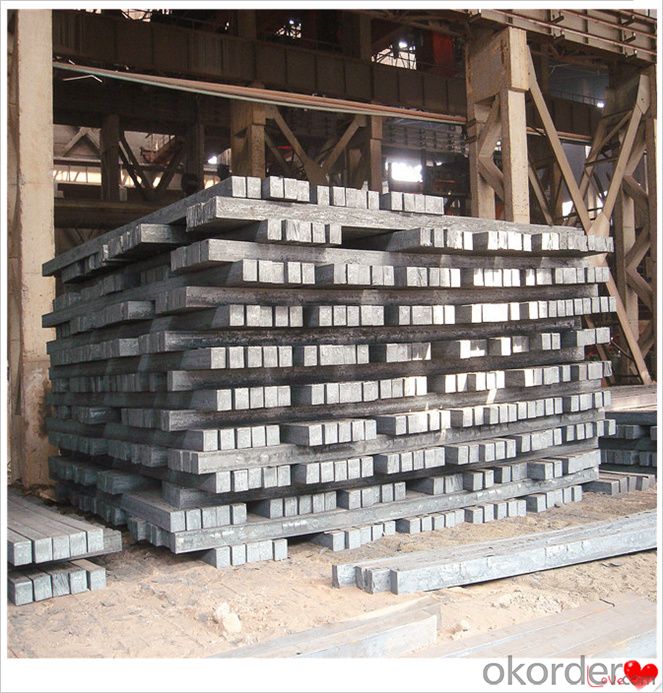
Technical Data
Size:100*100,120*120,150*150,130*130
Mn: 0.3%-0.6%
C: 1%
Cr:0.1%
Packaging
cargo ship or container
usually container price will add 15USD per ton
RFQ
We have organized several common questions for our clients,may help you sincerely:
1) How about your company?
A world class manufacturer & supplier of castings forging in carbon steel and alloy steel,is one of the large-scale professional investment casting production bases in China,consisting of both casting foundry forging and machining factory. Annually more than 8000 tons Precision casting and forging parts are exported to markets in Europe,America and Japan. OEM casting and forging service available according to customer’s requirements.
2) How to guarantee the quality of the products?
We have established the international advanced quality management system,every link from raw material to final product we have strict quality test;We resolutely put an end to unqualified products flowing into the market. At the same time, we will provide necessary follow-up service assurance.
3) How long can we receive the product after purchase?
In the purchase of product within three working days, We will arrange the factory delivery as soon as possible. The pecific time of receiving is related to the state and position of customers.Commonly 7 to 10 working days can be served.
4)Do you have your own QC department?
Yes, we have, our QC department will inspect the goods during the process of mass production and after completion of production.
hot sale!!! steel billets/ mild steel bar/ billet steel
(1): High quality steel with reasonable price.
(2): Wide excellent experiences with after-sale service.
(3): Every process will be checked by responsible QC which insures every product's quality.
(4): Professional packing teams which keep every packing safely.
(5): Trial order can be done in one week.
(6): Samples can be provided as your requirements.
If you are interested in our products, please don't hesitate to contact me.
Your any inquiry will be appreciated and we will offer you a rock-bottom price.
- Q:How are steel billets used in the manufacturing of structural steel?
- Steel billets are a crucial raw material in the manufacturing of structural steel. These billets, which are essentially semi-finished steel products, are typically produced through a process called continuous casting, where molten steel is solidified into a rectangular shape. Once the steel billets are formed, they are further processed in steel mills to create various structural steel products such as beams, columns, angles, and channels. The billets are heated and then passed through a series of rolling mills, where they undergo intense pressure and shaping to achieve the desired dimensions and profiles. During the rolling process, the steel billets are elongated and transformed into long, slender shapes. This is achieved by repeatedly passing the billets through a set of rollers, which gradually reduce their cross-sectional area. The rolling mills can be configured differently to produce different types of structural steel products, catering to specific construction requirements. After the rolling process, the structural steel products are further subjected to various finishing processes such as cooling, cutting, straightening, and surface treatment. These processes ensure that the final product meets the required specifications, including dimensional accuracy, surface quality, and mechanical properties. The use of steel billets in the manufacturing of structural steel offers several advantages. Firstly, the semi-finished nature of billets allows for flexibility in customization, enabling the production of steel products with different sizes, shapes, and profiles. Additionally, the continuous casting process used to produce billets ensures a more consistent and uniform material quality, reducing the risk of defects or inconsistencies in the final product. Overall, steel billets play a vital role in the manufacturing of structural steel by providing a reliable and versatile raw material. Their transformation through rolling and other processes allows for the production of high-quality, durable, and structurally sound steel products that are widely used in construction, infrastructure, and industrial applications.
- Q:What are the specifications for stainless steel billets used in the food industry?
- To ensure safety and hygiene, the food industry requires stainless steel billets to meet specific specifications. These specifications focus on the stainless steel's composition, corrosion resistance, and ability to withstand high temperatures and aggressive cleaning agents. First and foremost, stainless steel used for food industry billets must contain a high percentage of chromium, typically ranging from 16% to 18%. This high chromium content ensures excellent corrosion resistance, preventing any reaction with food or cleaning agents. In addition, these billets should have a low carbon content, usually below 0.08%. By keeping the carbon content low, the stainless steel becomes less susceptible to sensitization, which can cause corrosion and contamination of food products. Furthermore, the stainless steel billets must adhere to specific international standards, such as ASTM A276 or EN 10088. These standards outline the minimum requirements for chemical composition, mechanical properties, and surface finish. Moreover, the surface finish of the billets is crucial in the food industry. It must be smooth and free from defects like pits or cracks to prevent the accumulation of bacteria and facilitate easy cleaning. The dimensions of the billets also contribute to their suitability for the food industry. They are commonly available in square or rectangular shapes, with various sizes depending on the specific application. Lastly, these billets should be certified and compliant with industry regulations, such as those set by the Food and Drug Administration (FDA) or the European Food Safety Authority (EFSA). In conclusion, stainless steel billets used in the food industry must meet specific requirements regarding chromium and carbon content, international standards, surface finish, dimensions, and industry regulations for safety and hygiene.
- Q:How do steel billets contribute to the manufacturing of consumer goods?
- Consumer goods manufacturing heavily relies on steel billets, which serve as essential raw materials for a diverse array of products. These billets, formed through the casting process, are semi-finished steel items. After being heated, they are shaped into specific forms, depending on their intended applications. Steel billets significantly contribute to consumer goods manufacturing, particularly in the production of various metal parts. These parts can be found in automobiles, appliances, machinery, and furniture, among others. By utilizing steel billets as starting materials, manufacturers can create components that possess strength, durability, and resistance to wear and tear. Consequently, the final consumer goods have a prolonged lifespan and can withstand everyday usage demands. Additionally, the construction industry frequently employs steel billets for the fabrication of structural steel beams, columns, and other building materials. These components play critical roles in constructing infrastructure, residential buildings, commercial complexes, and other structures. Steel's high strength-to-weight ratio makes it an ideal material for these applications, providing essential structural support while minimizing weight and cost. Apart from their strength and durability, steel billets also offer versatility in terms of formability and machinability. This means that they can be effortlessly shaped, welded, and cut into various sizes and designs, enabling manufacturers to customize steel components to meet specific consumer requirements. This flexibility allows for the production of a wide range of consumer goods, ranging from small intricate parts to large complex structures. The use of steel billets in consumer goods manufacturing also contributes to sustainability. Steel is a highly recyclable material, and the production of steel products using recycled steel requires significantly less energy and resources compared to using virgin materials. This reduces the environmental impact associated with consumer goods production and promotes a more circular economy. In conclusion, steel billets are essential components in consumer goods manufacturing. Their strength, durability, versatility, and recyclability make them an ideal material choice for producing a diverse range of products that fulfill consumers' needs and expectations.
- Q:What are the different types of machining processes used for shaping steel billets?
- There are several different types of machining processes that can be used to shape steel billets. Here are some of the most common ones: 1. Turning: This process involves rotating the billet against a cutting tool, which removes material from the outer surface. It is often used to create cylindrical shapes or to remove excess material from the billet. 2. Milling: In milling, a rotating cutting tool is used to remove material from the surface of the billet. This process can be used to create flat surfaces, slots, or complex shapes. 3. Drilling: Drilling is the process of creating holes in the billet using a rotating cutting tool. It can be done manually or with the help of a drilling machine. 4. Grinding: Grinding is a process that uses an abrasive wheel or belt to remove material from the surface of the billet. It is often used to achieve a smooth and precise finish. 5. Broaching: Broaching involves using a broach, which is a toothed cutting tool, to remove material from the billet. This process is often used to create internal or external splines, keyways, or other special shapes. 6. Sawing: Sawing is a cutting process that uses a saw blade to separate the billet into smaller pieces or to remove excess material. It can be done manually or with the help of a sawing machine. These are just a few examples of the machining processes used for shaping steel billets. Each process has its own advantages and is chosen based on the specific requirements of the final product.
- Q:How are steel billets used in the manufacturing of agricultural machinery?
- Steel billets are often used as a starting material in the manufacturing process of agricultural machinery. They are typically shaped and transformed through various machining and forging techniques to create different components like gears, shafts, brackets, and frames. These components are then assembled to build the necessary machinery for farming operations, such as tractors, tillers, harvesters, and irrigation systems. The use of steel billets ensures durability, strength, and reliability in agricultural machinery, making them capable of withstanding the demanding conditions and heavy workloads often encountered in the agricultural industry.
- Q:What is the typical hardness of a steel billet?
- The typical hardness of a steel billet can vary depending on various factors such as the specific type of steel, the manufacturing process, and the intended use of the billet. In general, steel billets are designed to possess a certain level of hardness to ensure their suitability for subsequent processing and applications. Hardness in steel is often measured using the Rockwell hardness scale, which assigns a numerical value based on the depth of penetration of an indenter into the material. Steel billets typically have a hardness ranging from 20 to 70 on the Rockwell C scale (HRC), with higher values indicating greater hardness. However, it is important to note that the desired hardness can vary depending on the intended use of the billet. For example, if the billet is intended for use in structural applications or as a raw material for further processing, it may have a lower hardness to facilitate subsequent shaping and forming processes. On the other hand, if the billet is meant for applications that require high strength and wear resistance, such as in the production of tools or machinery components, it may have a higher hardness. Ultimately, the typical hardness of a steel billet will depend on the specific requirements and specifications of the intended application, and it is important to consult the relevant standards or technical specifications to determine the appropriate hardness range for a particular steel billet.
- Q:How are steel billets used in the production of reinforcing bars?
- The production of reinforcing bars relies heavily on steel billets, a crucial element in the process. These billets, categorized as semi-finished steel products, act as the primary raw material. To facilitate the formation of reinforcing bars, the steel billets undergo heating within a furnace, reaching a specific temperature. This heating procedure serves to enhance the steel's malleability, making it more pliable and easier to mold. Once the desired temperature is achieved, the billets progress through a sequence of rolling mills. These mills exert substantial pressure on the billets, progressively reducing their size and shaping them into the necessary dimensions for reinforcing bars. Additionally, the rolling process enhances the steel's mechanical properties, augmenting its strength and durability. After the completion of the rolling process, the elongated steel bars are cut into precise lengths based on desired dimensions and requirements. Subsequently, these lengths are allowed to cool, promoting steel stabilization and averting any deformations. Ultimately, the reinforcing bars undergo a surface treatment process, such as hot-dip galvanization or epoxy coating. This treatment imparts corrosion resistance and extends the lifespan of the reinforcing bars. Consequently, the performance and durability of these bars are enhanced, rendering them suitable for utilization in construction projects. In conclusion, steel billets are indispensable in the initial phases of reinforcing bar production. By means of heating, rolling, cutting, and surface treatment processes, these billets are transformed into high-strength steel bars that reinforce concrete structures.
- Q:How are steel billets used in the construction industry?
- Steel billets are used in the construction industry as raw materials for manufacturing various steel products such as beams, columns, and reinforcing bars. They are heated and shaped into different forms to be used in the construction of buildings, bridges, and other infrastructure projects.
- Q:How do steel billets contribute to the construction industry?
- The construction industry relies heavily on steel billets for several key reasons. Firstly, they serve as the primary material for producing a range of steel products used in construction, including beams, columns, and reinforcement bars. These products are essential for providing structural support and integrity to buildings and infrastructure projects. Steel billets are also vital in the manufacturing of precast concrete elements, which are widely utilized in construction. By reinforcing pre-stressed concrete beams with steel billets, their strength and durability are significantly enhanced. This enables the construction of larger and more intricate structures like bridges, stadiums, and high-rise buildings. Additionally, steel billets play a crucial role in the fabrication of steel pipes and tubes, which are extensively employed in water supply systems, sewage lines, and gas pipelines. These pipes ensure the reliable and efficient transportation of fluids and gases, thereby facilitating the proper functioning of various infrastructure networks. Apart from their structural applications, steel billets also contribute to the construction industry through their recyclability. Steel is one of the most globally recycled materials, and steel billets can be melted and reused multiple times without any loss in quality. This not only reduces the demand for new steel production but also minimizes environmental impact and waste generation. In summary, steel billets are indispensable in the construction industry due to their versatility, strength, and recyclability. They serve as the foundation for producing various steel products and play a critical role in constructing durable and sustainable buildings and infrastructure projects.
- Q:How do steel billets contribute to the overall durability of a structure?
- The construction industry heavily relies on steel billets, which play a vital role in enhancing the durability of structures. To create these billets, molten steel is cast into a solid form and then further processed into various shapes and sizes for construction projects. Steel billets contribute to the durability of a structure primarily through their strength and ability to bear heavy loads. Steel has an exceptional strength-to-weight ratio, meaning it can withstand significant loads and stresses without compromising its structural integrity. When used in construction, steel billets provide the necessary strength to support the weight of the entire structure, ensuring it can withstand various environmental and operational factors for an extended period. In addition, steel billets offer excellent corrosion resistance, making them ideal for structures exposed to moisture, humidity, or harsh weather conditions. Steel is inherently resistant to rust and other forms of corrosion, ensuring the structure remains intact and structurally sound over time, reducing the need for frequent maintenance and repairs. Steel billets also have the ability to withstand extreme temperatures due to their high melting point. This property is especially crucial for structures in high-temperature environments, such as industrial facilities or buildings near fire-prone areas, as it ensures their safety and longevity. Moreover, steel billets enhance the overall resilience of a structure against external forces like earthquakes or strong winds. Steel's high elasticity and ductility allow it to absorb and dissipate energy more effectively than other materials, reducing the risk of structural failure during seismic events or extreme weather conditions. In conclusion, steel billets contribute to the durability of structures in various ways. Their strength, load-bearing capacity, corrosion resistance, ability to withstand extreme temperatures, and resilience against external forces make them an ideal material for constructing long-lasting and robust structures. By incorporating steel billets into construction projects, engineers can ensure the durability and safety of structures for many years.
1. Manufacturer Overview |
|
|---|---|
| Location | |
| Year Established | |
| Annual Output Value | |
| Main Markets | |
| Company Certifications | |
2. Manufacturer Certificates |
|
|---|---|
| a) Certification Name | |
| Range | |
| Reference | |
| Validity Period | |
3. Manufacturer Capability |
|
|---|---|
| a)Trade Capacity | |
| Nearest Port | |
| Export Percentage | |
| No.of Employees in Trade Department | |
| Language Spoken: | |
| b)Factory Information | |
| Factory Size: | |
| No. of Production Lines | |
| Contract Manufacturing | |
| Product Price Range | |
Send your message to us
3sp 5sp Q195 Low Carbon Steel Billets Q235 Q275 Q345 Using Good Quailty Ceramic Fiber Bulk
- Loading Port:
- Dalian
- Payment Terms:
- TT OR LC
- Min Order Qty:
- 100 m.t.
- Supply Capability:
- 50000 m.t./month
OKorder Service Pledge
OKorder Financial Service
Similar products
New products
Hot products
Related keywords

































